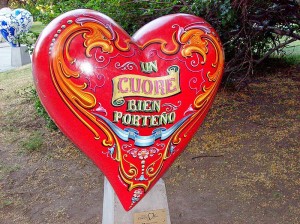 Wherever you learn Spanish, you will find that the locals speak with their own particular accent and local vocabulary. If you learn Spanish in Argentina–especially Buenos Aires–you will hear plenty of people speaking porteño, which is the local Spanish dialect. This dialect came about due to the influence of Italian and other European immigrants.
Wherever you learn Spanish, you will find that the locals speak with their own particular accent and local vocabulary. If you learn Spanish in Argentina–especially Buenos Aires–you will hear plenty of people speaking porteño, which is the local Spanish dialect. This dialect came about due to the influence of Italian and other European immigrants.
The word porteño can be translated to mean a “person from the port.” The reason that this porteño dialect is so unique is because it adapted some words and speaking styles from people who immigrated from Italy and Spain. In the 1880s, large waves of immigrants arrived from European countries. The Rio de la Plata area of Argentina was flooded with immigrants of European descent. Inland areas, on the other hand, saw fewer immigrants and therefore experienced less linguistic interference from foreign tongues. A larger dialectic group referred to as rioplatense resulted from this immigration and reflects the linguistic style of Spanish in Buenos Aries, La Plata, Santa Fe, Rosario and Montevideo (Uruguay).
It is interesting to note that there were a few different waves of settlers that influenced the language in the Rio de la Plata region. Between 1870 and 1890, immigration was dominated by Spanish, Basque, Galician, and Northern Italian people. From 1910-1945, more people came from Spain and Southern Italy. Additionally, there was a Jewish immigration. At this time, there was also a wave of English speakers who arrived from the United States; these people were quite influential and many were upper-middle class. All of these changes had an impact on the way the language transformed and adapted over the years.
These various groups also contributed to the birth of lunfardo, the slang vocabulary used by porteño speakers.